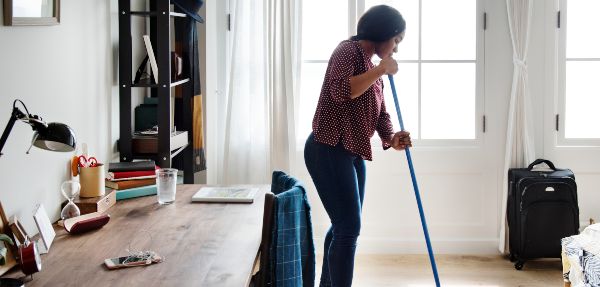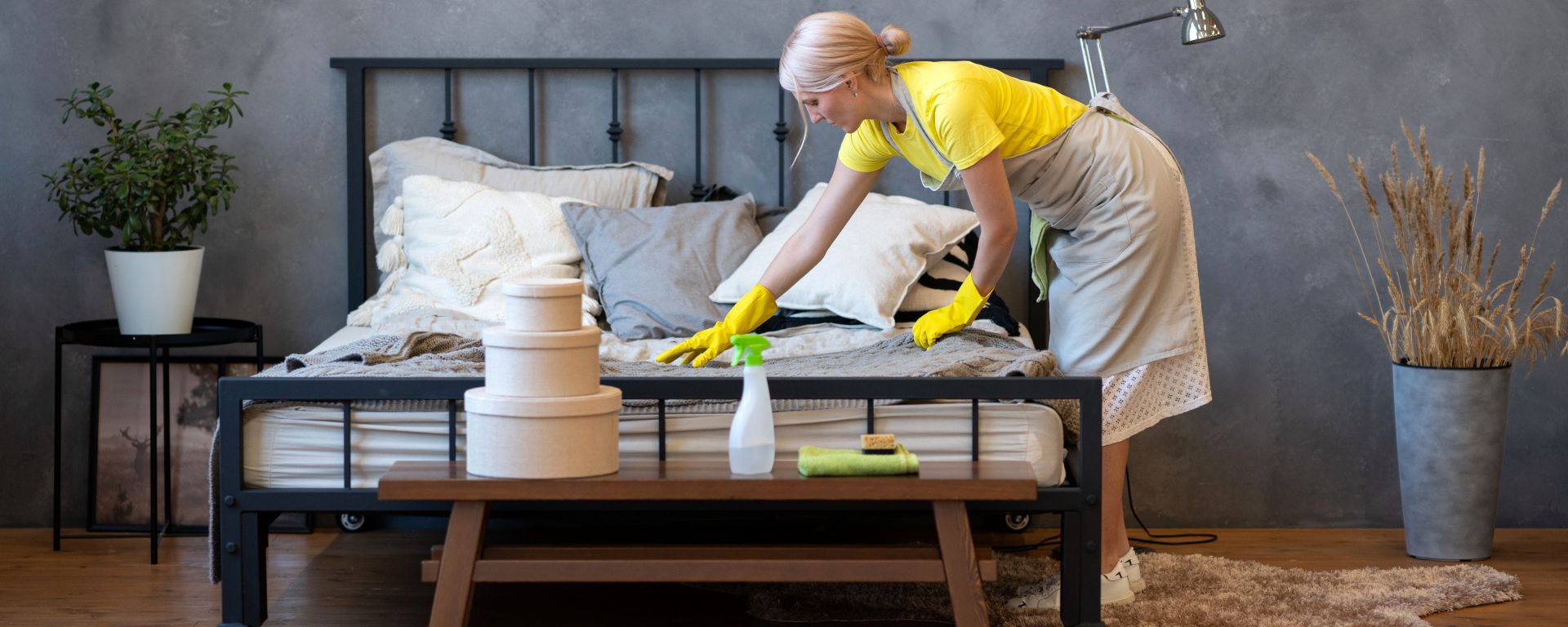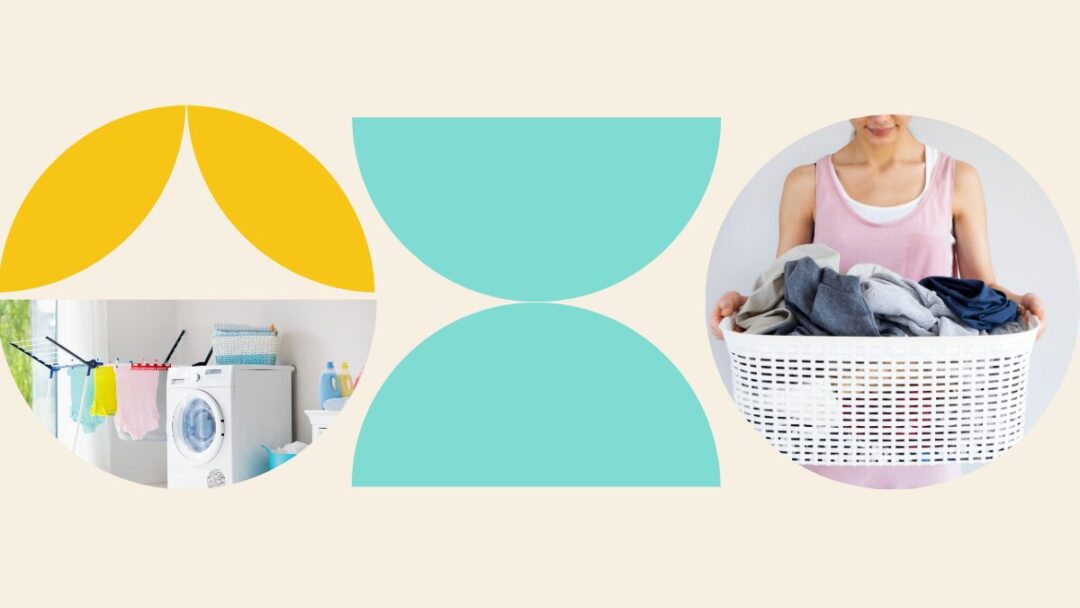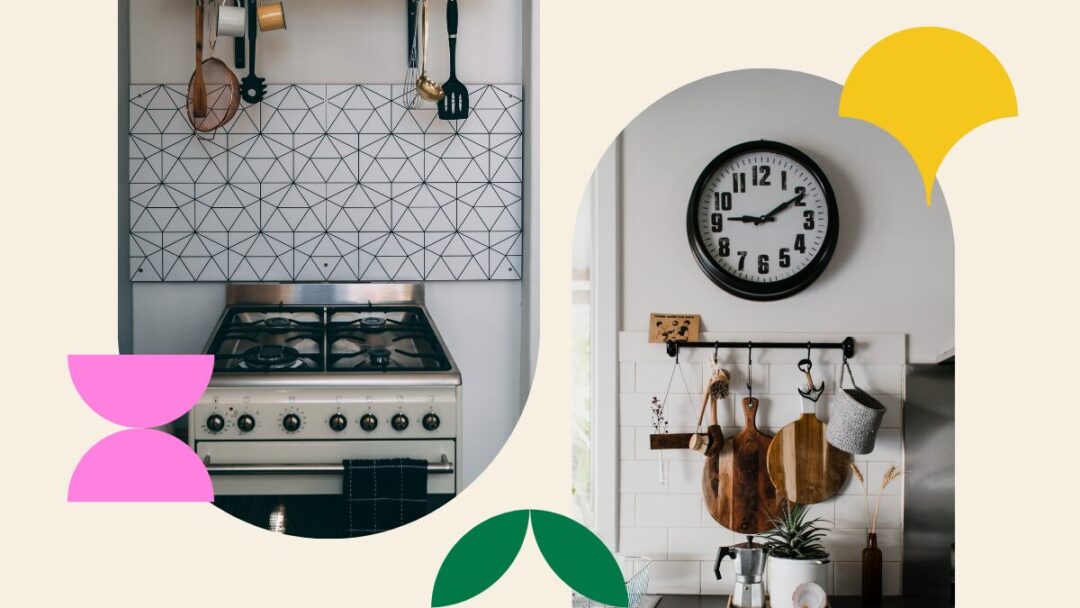If we don’t take the responsibility of cleaning our homes, we need to accept that they will be a mess. Cleaning your home may be simple, but even the best cleaner needs some guidance to be sure of efficient cleaning. Before cleaning, it’s best to formulate a clear plan, or schedule for cleaning, and prioritise what needs the most cleaning. Make a checklist if you have to – the more organised you are about cleaning, the less distracted you will become. We created this guide on the dos and don’ts of house cleaning to help you clean more efficiently and to protect different items in your home during the process.
Don’t Over Clean Carpets

If you have carpet floors, they must be cleaned regularly by vacuuming as often as possible. Especially if your home has high humidity, as mould can grow easily in humid homes. Vacuuming frequently also helps to get rid of dust mites, which can help reduce irritation for those who suffer from asthma and other allergies.
With that being said, washing your carpets and rugs too much can damage the carpet fibres, particularly if you use a harsh cleaner. Overwashing carpets can also result in residue being left behind or wicking of the carpet, which can give it an unwashed look, even if it has been cleaned.
Also, allow carpets to dry before walking or placing your furniture back on them, as this can result in your carpet becoming dirty just after you’ve cleaned it. If you need more guidelines for cleaning your carpets, learn how to clean carpets by hand like a pro.
Do Follow Cleaning Product Instructions
When cleaning your floors, avoid damaging or scratching the floors by using the right sort of equipment and solutions for cleaning. For more tips, read how to clean and mop all types of flooring in your home. Here are 5 tips to help you out:
- Always read the manufacturer’s instructions for cleaning before you start.
- Be aware that there are some cleaning products that leave a residue.
- When cleaning laminate flooring or hardwood floors, make sure to not use too much water.
- Be sure to use a soft, damp mop or brush appropriate for cleaning floors.
- Choose cleaning products that are made specifically for your floors, rather than all-purpose cleaners.
Don’t Forget The Baseboards And Ceiling Fans
When dusting, we often dust shelves, TV stands, lamps, and other reachable areas. But, ceiling fans and baseboards are generally neglected.
To clean ceiling fans, use a feather duster or even a pillow case covering a broom to clean the dust on the fan blades. The baseboards can be cleaned simply by vacuuming with a brush attachment, a sponge, or a duster. Clean the baseboards after cleaning your floors to ensure that dust from the baseboards doesn’t end up on the clean floor.
Do Clean Your Coffee Machine
If you’re a regular coffee drinker, you should also be cleaning your coffee machine regularly. Always start by checking your manufacturer’s guidelines for cleaning your machine. Yeast and mould are two common things found in the reservoir of your coffee machine. Learn how to clean and descale your Nespresso machine like an expert.
Don’t Let Grease Build Up
In your kitchen, the grease must be cleaned from the walls, backsplash, the inside of your oven, and your stovetop. Grease is not only gross and unsightly, but also poses a risk of potential fire hazards.

Do Clean The Kitchen Sink
If you don’t clean the kitchen sink, you’ll have bad smells and an unhygienic washing area in your kitchen. Keep germs away by removing blockages from the drain. If you’re able to identify what’s causing the block, use baking soda, vinegar, water, lemon peels, etc. to freshen and clean.
Use a sponge and scrub away watermarks and stains from the sink, and don’t forget to wipe the taps too.
Don’t Leave Out Larger Appliances
Don’t skip over bigger items in the kitchen like the dishwasher and washing machine, although they do clean frequently. Dishwashers accumulate build-up that can make the dishwasher-less effective. Try to remember to remove pieces of food after every wash. And, clean the gasket with a damp cloth, as well as the rubber seal. Be sure to clean the filter and wipe down the door of the dishwasher, the handles, and the controls. Clean the drain trap to ensure that no food bits or objects get stuck in it.
Just as a dishwasher is always cleaning dishes, your washing machine constantly cleans clothes, but still needs to be cleaned itself. There is build-up that can occur in the washing machine, resulting in a bad odour. To keep your washing machine in working condition, clean the washing machine drum, gasket, and door.
You may want to have a look at the top tips to keep appliances running for the holidays and years to come.
Do Follow The Grain On Stainless Steel Appliances
Similar to wood, stainless steel has a grain. You should always wipe in the direction of the grain to avoid dirt or cleaning products from getting into the cracks. It’s best to also use a microfiber cloth and cleaning products that are made specifically for stainless steel to prevent damage to your appliances.
Read how to clean stainless steel here.
Don’t Leave Spills On Tile Grout
Tile is great at being resistant to water and spills, but the grout is different. The grout is porous, meaning it can easily become discoloured or stained. Keep the grout clean by wiping it regularly, wiping up spills immediately, and sealing the grout now and then.
Do Clean High-Touch Surfaces
It’s important to wipe down your high-touch surfaces every day to get rid of germs. These areas are your light switches, door handles, keyboards, mouse, and doorknobs. Use disinfectant wipes to eliminate the spread of illnesses.
10 General Rules Of Cleaning

Keep these 10 tips in mind to get your cleaning done easily and effortlessly:
- Clean up soon rather than later – Spills and stains are usually easier to clean up when taken care of immediately. If you wait until the next day to clean stains from your carpets for example, you will spend a lot more time trying to get them out. The longer a stain is left to sit, the harder it will be to completely clean from your items, including your clothes, carpets, and couches.
- Always clean your home from the top down – Working from top to bottom always works out better when cleaning. For instance, when cleaning a room, start by dusting the ceiling and removing cobwebs. Dust the ceiling fan and light fixtures, then your walls and the things hanging on the walls, then move down to the furniture, and lastly, the floor and baseboards.
- Start cleaning with dry methods, followed by wet methods – Always start cleaning any room with dry methods like dusting, sweeping, and vacuuming. Then follow it with the wet methods, such as using an all purpose cleaner, glass cleaner, mopping etc. This ensures there won’t be any dirt that gets stuck to wet areas.
- Start with the least harmful approach to cleaning – Always begin by using the mildest cleaning methods and move on to more intense techniques if required. And be sure that you know your equipment and materials enough so that you’ll be able to clean without causing damage. Always test in a small spot before cleaning an entire thing. For instance, it’s better to sacrifice a small area on your stovetop than to scratch the entire surface with steel wool.
- Use time wisely – Time management will help you clean efficiently, and quickly. For instance, in the kitchen, after spraying your cleaner on appliances or countertops, you can keep yourself busy by cleaning the sink while the cleaner soaks in. When you come back to wipe the cleaner off, you won’t really have to scrub.
- Keep cleaning supplies close – It may be a good idea to carry your main cleaning tools and products with you. That way, you don’t have to make multiple trips back and forth for the right cleaning product. You may want to invest in a cleaning caddy to carry your cleaning gear around. Other useful products to have are a plastic bucket with a handle, a rolling cleaning supply cart, and an apron with large pockets. With all of your cleaning supplies in their own compartments, it will be much easier to move from room to room and clean.
- Spot test products – If you haven’t used a product before, test it out on an inconspicuous area on whatever you’re cleaning. Testing the cleaning product will show you whether the object will react or get damaged by it
- Be careful when cleaning certain items – Be careful when cleaning items that can be damaged by liquid such as electronics, computer screens, framed photos. Never spray the cleaner directly onto the object, but rather onto the cloth first. Liquid dripping into your frame or screen could damage them.
- Follow instructions – Always follow the instructions of manufacturers when cleaning all items. Also, be sure to follow the instructions of any new appliance, item of furniture, or household item. Never remove the care labels that come on washable objects either.
- Don’t forget to protect yourself. Lots of cleaning products are made with bleach and other abrasive chemicals that can harm your eyes, skin, nose, and maybe even your lungs. Make sure you’re ready to clean with protective gear like rubber gloves and safety glasses, and try to wear long sleeves to cover your skin in case of splatters from cleaning products.
Conclusion
These are the areas often forgotten about during normal house cleaning. Follow this list to be sure that everywhere in your home is taken care of. If your home needs to be cleaned, but you’re too busy, SweepSouth is here to help. Book a professional home cleaning service today.








